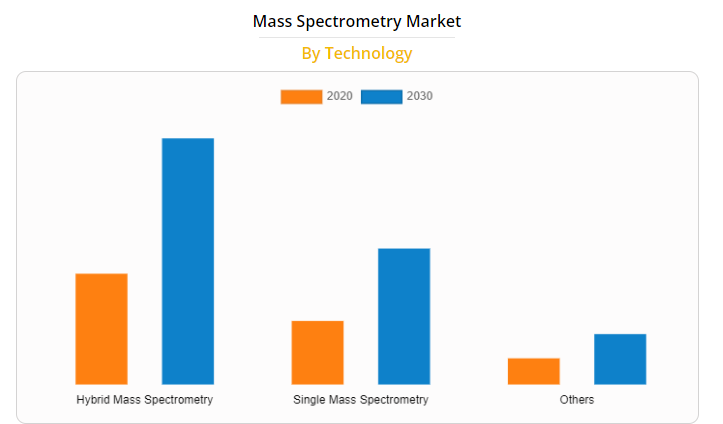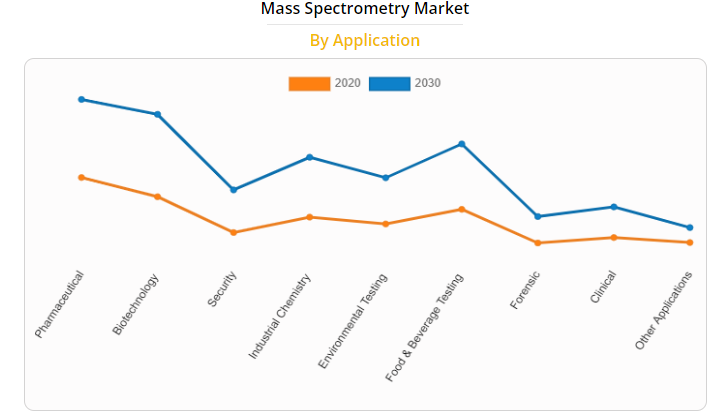Theme: Emerging trends in mass spectrometry
Mass Spectrometry 2022
On November 28-29, 2022, Brisbane, Australia will play home to the 11th Global Summit on Mass Spectrometry, which Mass Spectrometry 2022 cordially invites all participants from across the world to attend. All worldwide participants, distinguished scholars, students, business owners, and delegates are warmly welcomed.
This summit will feature keynote addresses, speaker talks, poster presentations from the Young Researchers Symposia, and B2B meetings with well-known mass spectrometry experts.
Mass Spectrometry 2022 is a distinctive opportunity to discuss methodologies in the lab and those in other industries. There will be a number of technical sessions and seminars which will gather professionals to the conference. There, we will also have the chance to learn about the perspectives of various experts working on mass spectrometry and related subjects, who will help us, improve our own concepts and processes. Mass spectrometry plays a major role in the fields such as chemistry, physics, biology, clinical biomedicine, and even space technology.Mass Spectrometry Summit is intended to cover a variety of application-related topics, including metabolomics, clinical applications, and pharmaceutical analysis.
- Experts in analytical techniques and spectroscopists
- Heads of Research in Laboratories and Centers
- Pharmacy and Chemical Industry Leaders in Research and Development
- Manufacturing businesses for analytical instruments
- Manufacturers with industrial experience and experience using different spectrometers
- Directors and instructors from educational institutions
- Ph.D. and post-doctoral students focusing on analytical and bio analytical methods
- Theoretical researchers developing analytical methods
- Research institutes Analytical chemistry professor and associate professor of science study scholars
Track 1: Mass spectroscopy in Gas chromatography
A popular method of chromatography used in analytical chemistry for separating and studying substances that may be evaporated without decomposing is gas chromatography (GC). GC is frequently used to determine a substance's purity or to separate the various ingredients in a mixture. GC can be used in preparative chromatography to separate pure substances from a mixture.
Vapor-phase chromatography (VPC) or gas-liquid partition chromatography is other names for gas chromatography (GLPC). In scientific literature, these other names and their corresponding acronyms are commonly used. Two types of gas chromatography are
- Gas-solid chromatography (GSC)
- Gas-liquid chromatography (GLC).
Track 2: Mass spectroscopy in Chromatography and HPLC
Each component in a mixture is separated, identified, and quantified using the analytical chemistry technique of high-performance liquid chromatography (HPLC), originally known as high-pressure liquid chromatography. A column of solid adsorbent material is moved through a pressurized liquid solvent that contains the sample combination using pumps. Each component in the sample interacts slightly differently with the adsorbent material, leading to a range of flow rates for the various components and their separation as they exit the column.
Track 3: Capillary electrophoresis-mass spectrometry
Capillary electrophoresis-mass spectrometry (CE-MS) is an analytical chemistry procedure that uses both capillary electrophoresis and mass spectrometry to separate substances. Molecular mass statistics and high separation efficiency are both delivered by CE-MS in a single study. It has good sensitivity and resolution, can analyses quickly, and utilizes a little volume (a few Nano liters).
Track 4: Mass spectroscopy in Ion mobility
The analytical chemistry technique known as ion mobility spectrometry-mass spectrometry (IMS-MS) separates gas phase ions based on their interactions with a collision gas and their masses. Using an ion mobility spectrometer and a buffer gas, the ions are initially separated based on their mobility over millisecond duration. In a subsequent stage, the separated ions are put into a mass analyzer so that their mass-to-charge ratios may be calculated on a microsecond time period.
Track 5: Bio Spectroscopy
The main objective of Bio spectroscopy is to establish a single platform for molecular spectroscopists working on biological issues and for bio-researchers who want to employ spectroscopy to further their work. Bio spectroscopy's main purpose is to develop a single focus on the application of spectroscopy to learn more about biological substances.
Spectrometric analysis of materials for biosynthesis
Proteomics
Genomics
Track 6: Spectroscopy of NMR
Nuclear Magnetic Resonance spectrometry (NMR) is an analytical method used in quality control and research to examine a sample's composition and purity as well as its molecular structure. NMR, for instance, can quantitatively analyses compounds that contain well-known substances. NMR can be utilized to directly infer the fundamental structure from unidentified substances or to compare against spectral libraries. Nuclear magnetic resonance can be used to examine physical properties at the molecular level, such as conformational exchange, phase shifts, solubility, and diffusion, once the basic structure is understood. It can also be used to analyze molecular conformation in solution. There are various NMR techniques that can be used to get the desired results.
Track 7: Mass Spectrometry in Toxicology
The study of poisons is known as toxicology, and it aims to link the quantitative and qualitative interactions between poisons and the effects they have on a living system's physiology and behavior. Clarifying a poison's mechanism of action and improving treatments and prevention strategies for harmful consequences are some crucial components of toxicology.
Criminal Science Toxicology
Ecologic Toxicology
Animal Toxicology
Toxicology and Food Safety
Chemical Toxicology of Food
Pathology of Experimental Toxicology
genomics toxicity
Neuro Toxicology
Forensic toxicology techniques and drug toxicology testing advancements
Track 8: Mass Spectrometry in Pharmaceutical Analysis
A strong instrument with various uses in the pharmaceutical and medicinal fields is mass spectroscopy. Analyzing drugs now has a new dimension thanks to instruments' increased sensitivity and resolution. The most dependable tool in the pharmaceutical sector,mass spectroscopy is utilized from the very beginning of drug discovery to the very end of product manufacturing. It is also used to evaluate the quality of after-market products.
Analysis of formulation
Drug assessment
phytochemical testing
Defining the structure
Sequence and structural study of peptides and proteins
Track 9: Mass Spectrometry in Metabolomics and Lipidomics
To comprehend the metabolites and lipids present in samples with biological origins, sand lipidomic are useful tools. To differentiate between illness manifestations and biological responses, genetic changes, and dietary and pharmacological therapies, variations in the species or quantities can be used. This information enables researchers to comprehend an organism's functioning or to identify the underlying causes of a disease.
Mass spectrometry for biological product analysis
protein substance analysis
Analysis of organic fluids
The identification of cell mutations
Track 10: Mass Spectrometry Evolution
For both quantitative and qualitative applications, mass spectrometry (MS) has developed into a potent analytical technique; uses of MS include the ion and weights separation. A heated batch inlet, heated direct insertion probe, or gas chromatograph is typically used to introduce the samples. In the area of clinical laboratories, the ionization (MS) technique has grown to be important for structural analysis or quantitative assessment of metabolites in a compound biological material. Applications of TANDEM mass spectrometry include the study of thermochemical data, the determination of fragmentation mechanisms, the measurement of elementary compositions, applications to high-selectivity and high-sensitivity analysis, and the elucidation of structure (kinetic method).
Modern Mass Spectroscopy Challenges
Positive control Mass Spectrometry methods
Errors in mass spectrometry equipment and rectification
Track 11: Elemental Mass Spectroscopy
The innovation is to use mass spectrometry to convert from living chemical compound concentrations in bioscience to radiolabeling and radioactivity measurements, which had been the gold standard. The capability of ICP-MS to obtain high-resolution quantitation’s of metallic and hetero elements Elemental mass spectrometry, also known as inductively coupled plasma-mass spectrometry (ICP-MS), operates at extremely high temperatures (up to 8000 K), allowing to interrupt all chemical bonds. This is in contrast to molecular mass spectrometry, which generates ions from complete organic entities.
Track 12: Ionization Mass Spectroscopy
There are numerous kinds of ionization styles are employed in mass spectrometry styles. The classic styles that most chemists are habituated to are electron impact (EI) and Fast Atom Bombardment( FAB). These ways do not feel to be used important with ultramodern mass spectrometry except EI for environmental work using GC-MS. More modern ways of and other secondary styles have taken their place within the mass spectrometry laboratory. Ionization mass spectrometry which has come an incontrovertibly essential system inside the clinical lab for helping examination or quantitative estimation of metabolites during a complex natural sample. MS/ MS operations are abundant. Mass spectrometry is an investigative strategy with high explicitness and a developing nearness in exploration center prescription.
- Gas pressure chemical Ionization (APCI)
- Electrospray ionization (ESI)
- Matrix-assisted laser desorption ionization (MALDI)
Track 13: Proteomic Research Using Mass Spectrometry
Mass spectrometry is frequently used to examine biomolecules, and proteomics -a worldwide analysis for protein identification and quantification is the field that is growing the wildest. Neuro-proteomics is a challenging technique that still has a ways to go before it can profile the entire neural proteome. It is a relatively new field with numerous therapeutic and scientific uses.
- Proteomics and Protein Biochemistry
- Systems biology and computational proteomics
- Proteomics and Applications in Plants
- Nutritional and Food Proteomics
- Clinical proteomics and immuneproteomics
- Engineering proteins and designing molecules
- Neurometabolomics and Neuroproteomics
- Technologies in proteomics
Track 14: Atomic mass spectroscopy
The last twenty years have seen a tremendous expansion in atomic mass spectrometry. Atomic mass spectrometry has lower detection limits (ppt to ppq) and broad elemental coverage in comparison to most optical approaches, with the added capacities of delivering isotopic abundance information and internal standardization by isotope dilution. The development of dependable instrumentation, particularly commercial instruments for inductively coupled plasma mass spectrometry (ICP-MS), glow discharge mass spectrometry (GDMS), laser sampling mass spectrometry, and secondary ion mass spectrometry, is directly related to the growth in the use of atomic mass spectrometry (SIMS).
Track 15: Mass spectroscopy in environmental science
Mass spectrometry is frequently used to test environmental hazards in air, water, and soil since this method provides unmatched resolution and identification of trace pollutants. MS technology hence satisfies the strict requirements of US EPA and EU laws. Discover more about how MS performs well in environmental testing and analysis when combined with GC, LC, and IC separation techniques
Track 16: Mass spectroscopy in clinical science
The mass spectrometry technology is utilized in clinical mass spectrometry for diagnostic purposes. Clinical mass spectrometry is used in medical labs to screen for toxicity, identify biomarkers and enzymes, and diagnose metabolism deficits. Clinical diagnostic mass spectrometers are useful instruments for a diagnostic medical laboratory since they can examine a little amount of sample for numerous things simultaneously.
Track 17: Mass spectrometry for isotope ratios
The method entails determining the abundances of various isotopes of hydrogen, carbon, oxygen, and nitrogen. When biological, physical, or chemical processes result in isotopic fractionation, such differences may occur. The effects of fractionation are most apparent on the lightest isotopes, and the variations in isotope ratio values that emerge from these effects are frequently unique to certain origins and production methods.
Track 18: Mass spectroscopy in forensic science
Forensic scientists use mass spectrometry, an analytical method that assesses the mass-to-charge ratio of ions. It is one of the best tools available to toxicologists for identifying and analyzing chemicals. Particularly in the legal/forensics world, where it has been able to give some of the most reliable evidence in cases, mass spectrometry has a long and interesting history. Mass spectrometry has changed significantly over time and will undoubtedly keep developing.
Track 19: Mass spectrometry using glow discharge (GD-MS)
Analyzing traces of elements directly in highly pure conductive materials. Providing complete material characterization mainly for metallurgy, the Thermo Fisher scientific Element GD plus GD-MS system features a fast glow discharge ion source in a high-resolution mass spectrometer. The system can detect and routinely quantify practically all elements present in a solid sample at or below the ppb level, making it the ideal tool for the direct investigation of high purity conductive and semi-conductive materials.
Track 20: Inductively Coupled Plasma Mass Spectrometry (ICP-MS)
Cutting-edge and extensive ICP-MS instrument portfolio. All laboratories, from high-throughput labs performing application testing to cutting-edge research facilities, can benefit from Thermo Scientific ICP-MS devices.
Track 21: Advances in the catalysis and adsorption technologies
The empirical art has consistently advanced the science, which is a defining feature of catalytic development. The first formulations of catalytic activity were preceded by the fermentation processes used to make wine and vinegar, soap, and ether. When a research scientist's creativity resulted in useful applications, the theory of catalysis has often been more successful. Theoretical research into basic concepts has accelerated the rate of technical advancement. Through experimental study, the process of chemisorption was generalized to a wide range of catalytic materials, starting with metals and progressing to compounds like oxides, sulphides, and halides. It was discovered that the chemistry of interaction at surfaces is significantly different from the chemistry of typical molecular compound synthesis. The duality of adsorption suggested by earlier experimental results, the re - designed for van der Waals adsorption, and the transition to chemical binding with activation energy dependent on the intersection of the potential energy curves corresponding to the two types of adsorption were all revealed by theoretical studies by Eyring and Lennard Jones.
The mass spectrometry request size is expected to grow from an estimated USD4.1 billion in 2022 to USD5.6 billion by 2025, at a CAGR of6.5. Adding spending on pharmaceutical R&D across the globe, government regulations on medicine safety, growing focus on the quality of food products, increase in crude and shale gas product, and growing government enterprise for pollution control and environmental testing are high growth prospects for the mass spectrometry request during the cast period.
The unexpected outbreak of COVID- 19 has significantly affected the mass spectrometry request. The request is anticipated to witness a different set of embrace in 2022. Mass spectroscopy resignation for testing operations is high in healthcare & medicinal, biological exploration, and food & potables industries. New medicine development, and medicine repurposing, and the adding product of pharma phrasings have led to an adding need for safety and quality measures in the pharmacy assiduity. Strict government regulations and increased demand for quality conservation in these industries drive the relinquishment of mass spectrometry. Still, force chain dislocations in the petrochemical industry, and regulatory relaxation in pollution monitoring is expected to limit the relinquishment of mass spectrometers.
Mass Spectrometry Market Segmentation
On the basis of technology, application, and region, the mass spectrometry market is segmented. It is separated into three categories based on technology: single mass spectrometry, hybrid mass spectrometry, and other mass spectrometry. Triple quadrapole, quadrapole TOF, and Fourier transform mass spectrometry are additional categories of hybrid mass spectrometry (FTMS). Ion trap, quadrapole, and time-of-flight mass spectrometry are further sub-divisions of single mass spectrometry (TOF). Pharmaceutical, biotechnology, security, industrial chemistry, environmental testing, food & beverage testing, forensic, clinical, and other applications are included in the application category. The mass spectrometry market is examined in terms of each region, including North America, Europe, Asia-Pacific, and LAMEA.
Segment Reviews
The mass spectrometry industry is divided into three major categories based on technology: hybrid, single, and other mass spectrometry. In 2022, the hybrid mass spectrometry sector held for a sizable portion of the mass spectrometry market, and it is expected that this trend will hold throughout the forecast period. Their use and level of performance when compared to other kinds of spectrometers are responsible for this. Hybrid mass spectrometry combines a variety of mass analyzer parts to get the best results in a single test. The increased performance of the instrument, which may be measured in terms of greater sensitivity and resolving power, is another set of benefits offered by hybrid mass spectrometers.
Pharmaceutical, biotechnology, security, industrial chemistry, environmental testing, food & beverage testing, forensic, clinical, and other applications make up the market's application-based divisions. In 2022, the mass spectrometry market has been dominated by the pharmaceuticals sector. During the forecast period, this trend is anticipated to be true. This is explained by the fact that mass spectrometry makes exact component identification in mixtures possible, but wrong element identification might lead to dangerous circumstances. Mass spectrometers are now widely used in the pharmaceutical sector for a variety of purposes, from the early stages of drug discovery to the later phases of research and clinical trials.
Conference Highlights
- Mass spectroscopy in Gas chromatography
- Mass spectroscopy in Chromatography and HPLC
- Capillary electrophoresis-mass spectrometry
- Mass spectroscopy in Ion mobility
- Bio Spectroscopy
- Spectroscopy of NMR
- Mass Spectrometry in Toxicology
- Mass Spectrometry in Pharmaceutical Analysis
- Mass Spectrometry in Metabolomics and Lipidomics
- Mass Spectrometry Evolution
- Elemental Mass Spectroscopy
- Ionization Mass Spectroscopy
- Proteomic Research Using Mass Spectrometry
- Atomic mass spectroscopy
- Mass spectroscopy in environmental science
- Mass spectroscopy in clinical science
- Mass spectrometry for isotope ratios
- Mass spectroscopy in forensic science
- Inductively Coupled Plasma Mass Spectrometry (ICP-MS)
- Mass spectrometry using glow discharge (GD-MS)
- Advances in the catalysis and adsorption technologies
To share your views and research, please click here to register for the Conference.
To Collaborate Scientific Professionals around the World
| Conference Date | November 28-29, 2022 | ||
| Sponsors & Exhibitors |
|
||
| Speaker Opportunity Closed | |||
| Poster Opportunity Closed | Click Here to View | ||
Useful Links
Special Issues
All accepted abstracts will be published in respective Our International Journals.
Abstracts will be provided with Digital Object Identifier by











